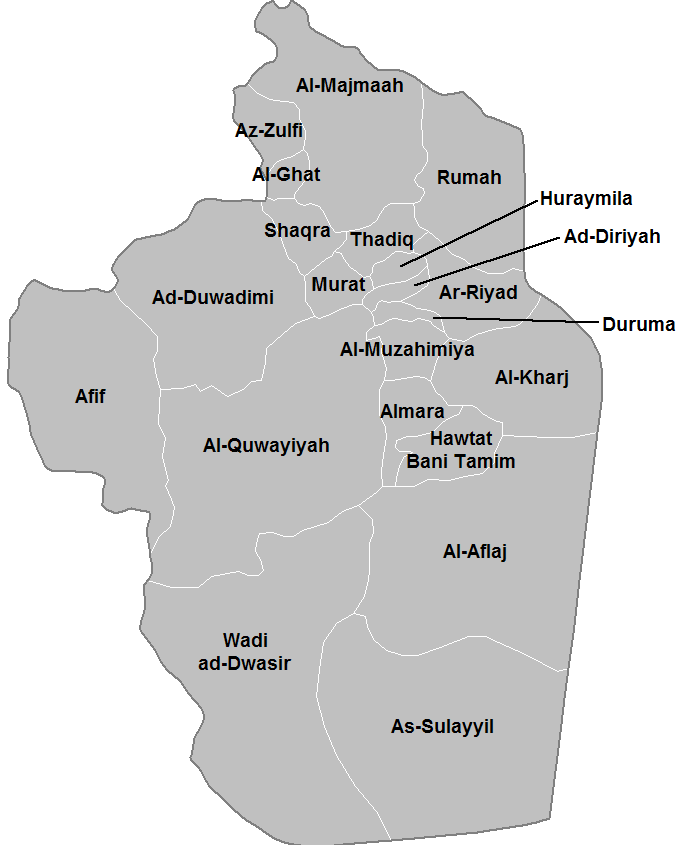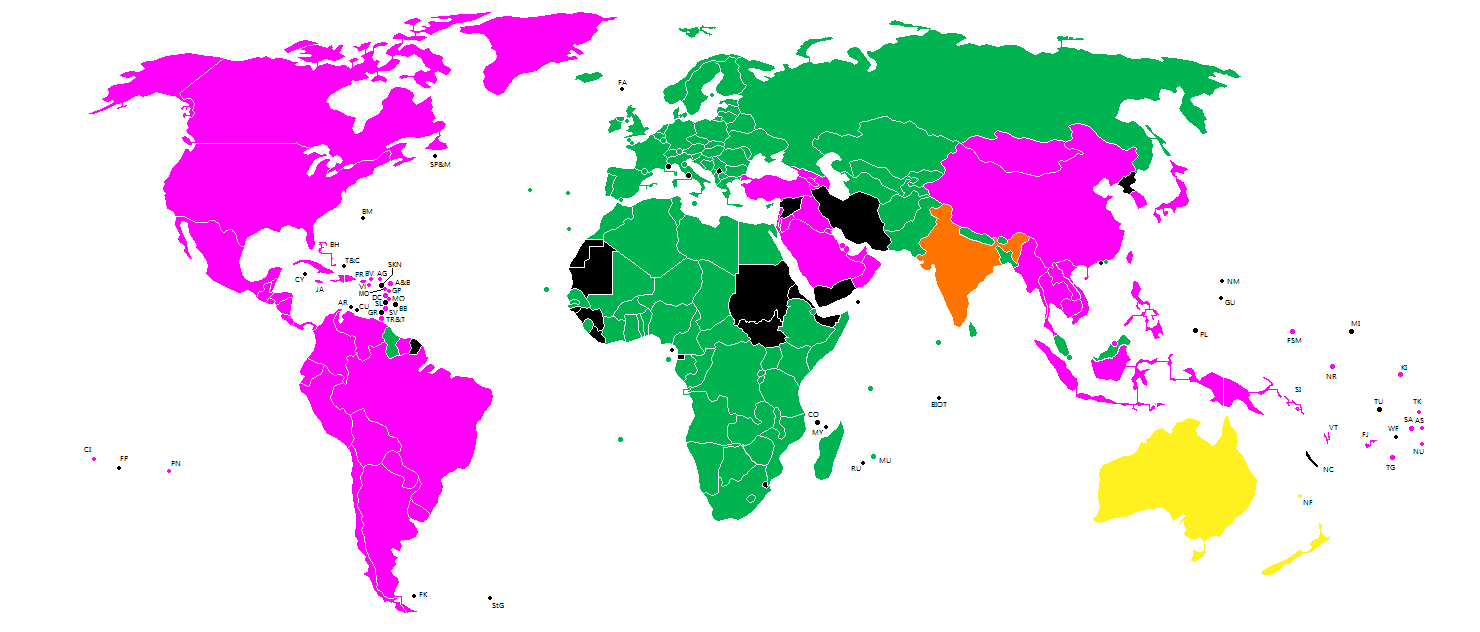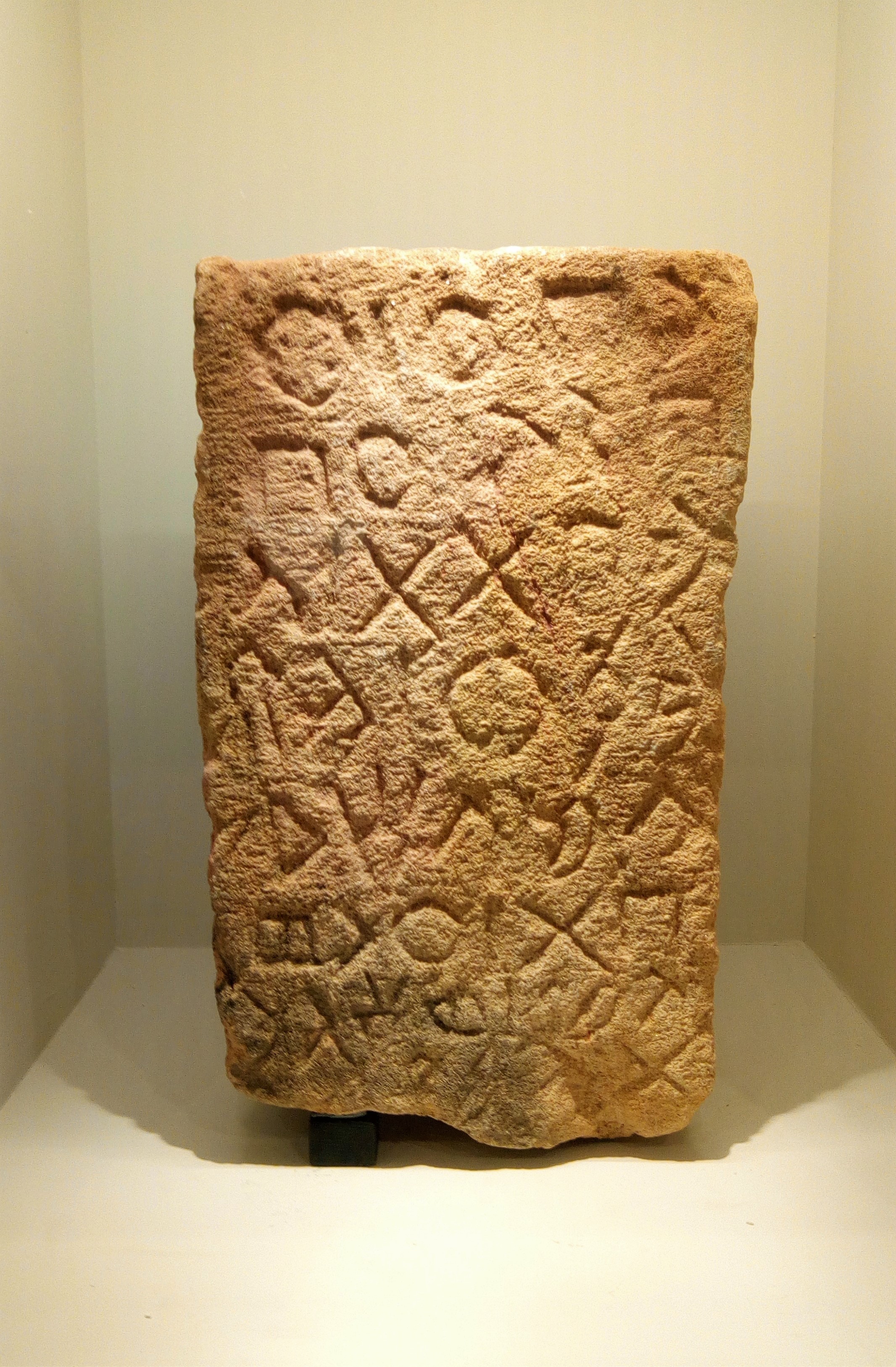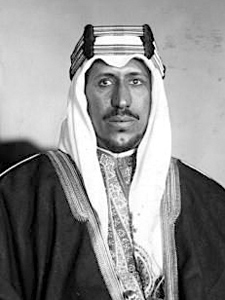|
Qaryat Al-Fāw
Qaryat Al Faw ( ar, قرية الفاو) was the capital of the first Kindah kingdom. It is located about 100 km south of Wadi ad-Dawasir, and about 700 km southwest of Riyadh, the capital city of Saudi Arabia Saudi Arabia, officially the Kingdom of Saudi Arabia (KSA), is a country in Western Asia. It covers the bulk of the Arabian Peninsula, and has a land area of about , making it the fifth-largest country in Asia, the second-largest in the A .... The Al Faw archeological site reveals various features such as residential houses, markets, roads, cemeteries, temples, and water wells. It is home to a 1st century BC Old Arabic inscription written in the Ancient South Arabian script which is one of the oldest of its kind in South Arabia. History Researchers know little about the city. According to archaeological excavations, the city dates to the fourth century BC. The city was originally known per the corpus of inscriptions in the site as Qaryat Dhu Kahl. K ... [...More Info...] [...Related Items...] OR: [Wikipedia] [Google] [Baidu] |
Riyadh Region
The Riyadh Province ( ar, منطقة الرياض '), also known as the Riyadh Region, is a region of Saudi Arabia, located in the geographic center of the country. It has an area of and with a 2017 population of 8,216,284, it is the second-largest region by both area and population, behind the Eastern Province and Mecca Region respectively. The capital governorate of the province is the Riyadh Governorate and it is named after the capital of the kingdom, Riyadh, which is the most populous city in the region and the kingdom, with a little less than two-thirds of the population of the region residing within the city. The province was governed for nearly five decades by Prince Salman bin Abdulaziz from 1963 to 2011. Other populous cities in the region include Al Ghat, Zulfi and Majma'ah. Approximately half of the region's area is desert, and it only borders other regions of the kingdom; it has no international borders. The region borders, clockwise from the north, the Easte ... [...More Info...] [...Related Items...] OR: [Wikipedia] [Google] [Baidu] |
Najd
Najd ( ar, نَجْدٌ, ), or the Nejd, forms the geographic center of Saudi Arabia, accounting for about a third of the country's modern population and, since the Emirate of Diriyah, acting as the base for all unification campaigns by the House of Saud to bring Arabia under a single polity and under the Salafi jurisprudence. Historic Najd was divided into three modern administrative regions still in use today. The Riyadh region, featuring Wadi Hanifa and the Tuwaiq escarpment, which houses easterly Yamama with the Saudi capital, Riyadh since 1824, and the Sudairi region, which has its capital in Majmaah. The second administrative unit, Al-Qassim, houses the fertile oases and date palm orchards spread out in the region's highlands along Wadi Rummah in central Najd with its capital in Buraidah, the second largest Najdi city, with the region historically contested by the House of Rashid to its north and the House of Saud to its east and south. The third administrative un ... [...More Info...] [...Related Items...] OR: [Wikipedia] [Google] [Baidu] |
Archaeology Of Saudi Arabia
The archaeology of Saudi Arabia includes the following archaeological sites: *Abu Loza's Bath * Ain Qannas * Al Naslaa *Al-'Ula * Al-Rabadha * Al-Ukhaydir, Tabuk Province * Ancient towns in Saudi Arabia *Aynuna * Bir Hima Rock Petroglyphs and Inscriptions * Columns of Rajajil *Desert kite * Dhat al-Hajj * Dosariyah * Dumat al-Jandal * Dumat al-Jandal Wall *Gerrha *Hegra (Mada'in Salih) *Jabal al-Baidain * Jabal al-ʿHayn *Jubail Church *Land of Tema *Leuke Kome *Marid Castle *Near Eastern bioarchaeology *Old Town, Al-'Ula * Qal'at al-Qatif *Shanqal Fort *Sisira Well * Tarout Castle *Tarout Island *Tayma *Tomb of Eve * Uqair salt mine (Archaeological site) *Pharaonic Tayma inscription The Pharaonic Tayma inscription is a hieroglyphic petroglyph found near the oasis of Tayma in Tabuk Region, Saudi Arabia. It was discovered by local archaeologists in 2010. The rock engraving was found around 400 km north of Madinah and northe ... * Tayma stones Rock art in Saudi Arabia * Al Nas ... [...More Info...] [...Related Items...] OR: [Wikipedia] [Google] [Baidu] |
Google Translate
Google Translate is a multilingual neural machine translation service developed by Google to translate text, documents and websites from one language into another. It offers a website interface, a mobile app for Android and iOS, and an API that helps developers build browser extensions and software applications. As of , Google Translate supports languages at various levels, and , claimed over 500 million total users, with more than 100 billion words translated daily, after the company stated in May 2013 that it served over 200 million people daily. Launched in April 2006 as a statistical machine translation service, it used United Nations and European Parliament documents and transcripts to gather linguistic data. Rather than translating languages directly, it first translates text to English and then pivots to the target language in most of the language combinations it posits in its grid, with a few exceptions including Catalan-Spanish. During a translation, it looks for p ... [...More Info...] [...Related Items...] OR: [Wikipedia] [Google] [Baidu] |
Minaean Language
The Minaean language (also Minaic, Madhabaic or Madhābic) was an Old South Arabian or Ṣayhadic language spoken in Yemen in the times of the Old South Arabian civilisation. The main area of its use may be located in the al-Jawf region of North-East Yemen, primarily in the Wādī Madhāb. Most of texts in this language were composed by the Minaeans, but the other civil-temple communities of the Wādī Madhāb (Nashshan, Kaminahu, Ḥaram, and Inabba') also used it as a literary medium. History The earliest Minaean inscriptions are contemporary with the earliest Sabaean ones, i.e. the 8th century BCE, though they are less numerous, and come from the cities along Wadi Madhaab, to the north-east of Ma'rib. Minaean trading posts, and Minaean inscriptions are also found outside South Arabia, as in the ancient oasis of Dēdan (the present day Al-'Ula in Saudi Arabia), and even on the Greek island of Delos and in Egypt. Minaean seems to disappear as a written language about the end ... [...More Info...] [...Related Items...] OR: [Wikipedia] [Google] [Baidu] |
Petroglyph
A petroglyph is an image created by removing part of a rock surface by incising, picking, carving, or abrading, as a form of rock art. Outside North America, scholars often use terms such as "carving", "engraving", or other descriptions of the technique to refer to such images. Petroglyphs are found worldwide, and are often associated with prehistoric peoples. The word comes from the Greek prefix , from meaning "stone", and meaning "carve", and was originally coined in French as . Another form of petroglyph, normally found in literate cultures, a rock relief or rock-cut relief is a relief sculpture carved on "living rock" such as a cliff, rather than a detached piece of stone. While these relief carvings are a category of rock art, sometimes found in conjunction with rock-cut architecture, they tend to be omitted in most works on rock art, which concentrate on engravings and paintings by prehistoric or nonliterate cultures. Some of these reliefs exploit the rock's nat ... [...More Info...] [...Related Items...] OR: [Wikipedia] [Google] [Baidu] |
Abdulrahman Al-Ansary
Abdulrahman al-Ansary (A.R. al-Ansary, Abdul-Rahman al-Ansary; ar, عبدالرحمن بن محمد الطيب الأنصاري) is a former professor of archeology at King Saud University and member of the first and second terms of the Consultative Assembly of Saudi Arabia. Professor al-Ansary is the founder of the rediscovery of archeological site of Qaryat al-Fau.al-Ansary, A.RQaryat al-Fau: A Portrait of Pre-Islamic Civilisation in Saudi Arabia Riyadh University Press. 1982. Education Professor al-Ansary earned a bachelor's degree in Arabic language and literature from Cairo University in 1960 and a Doctor of Philosophy degree from the department of Semitic Studies of the University of Leeds in 1966. During his doctoral studies, he focused on the comparative study of Lihynite personal names and trained at archeological excavations with his thesis supervisor at Durham University and Motya, Sicily, and with Professor Kathleen Kenyon in Jerusalem in 1966. Career Professor ... [...More Info...] [...Related Items...] OR: [Wikipedia] [Google] [Baidu] |
Department Of Antiquities And Museums
Department may refer to: * Departmentalization, division of a larger organization into parts with specific responsibility Government and military *Department (administrative division), a geographical and administrative division within a country, for example: **Departments of Colombia, a grouping of municipalities **Departments of France, administrative divisions three levels below the national government **Departments of Honduras **Departments of Peru, name given to the subdivisions of Peru until 2002 **Departments of Uruguay *Department (United States Army), corps areas of the U.S. Army prior to World War I *Fire department, a public or private organization that provides emergency firefighting and rescue services *Ministry (government department), a specialized division of a government *Police department, a body empowered by the state to enforce the law * Department (naval) administrative/functional sub-unit of a ship's company. Other uses * ''Department'' (film), a 2012 Bollywoo ... [...More Info...] [...Related Items...] OR: [Wikipedia] [Google] [Baidu] |
King Saud University
King Saud University (KSU, ar, جامعة الملك سعود) is a public university in Riyadh, Saudi Arabia. Established in 1957 by King Saud bin Abdulaziz to address the country's skilled worker shortage, it is the first university in the Kingdom of Saudi Arabia. The university was known as Riyadh University before a name change in 1982. The student body of KSU today consists of 40,000 male and female students, 7% of which are international. The female students have their own disciplinary panel, and there is a center supervising the progress of female students, either personally by female faculty members or by male faculty members via a closed television network. The university offers courses in the natural sciences, the humanities, and professional studies, and many courses are tuition-free. The medium of instruction in undergraduate programs is English and Arabic depending on the chosen major. Among Arab universities, its medical programs are highly regarded. History Es ... [...More Info...] [...Related Items...] OR: [Wikipedia] [Google] [Baidu] |
Saudi Aramco
Saudi Aramco ( ar, أرامكو السعودية '), officially the Saudi Arabian Oil Company (formerly Arabian-American Oil Company) or simply Aramco, is a Saudi Arabian public petroleum and natural gas company based in Dhahran. , it is one of the largest companies in the world by revenue. Saudi Aramco has both the world's second-largest proven crude oil reserves, at more than , and largest daily oil production of all oil-producing companies. It is the single greatest contributor to global carbon emissions of any company in the world since 1965. On 11 May 2022, Saudi Aramco became the largest (most valuable) company in the world by market cap, surpassing Apple Inc. Saudi Aramco operates the world's largest single hydrocarbon network, the Master Gas System. In 2013 crude oil production total was , and it manages over one hundred oil and gas fields in Saudi Arabia, including 288.4 trillion standard cubic feet (scf) of natural gas reserves. Saudi Aramco operates the Ghawar Field ... [...More Info...] [...Related Items...] OR: [Wikipedia] [Google] [Baidu] |
Empty Quarter
The Rub' al KhaliOther standardized transliterations include: / . The ' is the assimilated Arabic definite article, ', which can also be transliterated as '. (; ar, ٱلرُّبْع ٱلْخَالِي (), the "Empty Quarter") is the sand desert (erg) encompassing most of the southern third of the Arabian Peninsula. The desert covers some (the area of long. 44°30′−56°30′E, and lat. 16°30′−23°00′N) including parts of Saudi Arabia, Oman, the United Arab Emirates, and Yemen. It is part of the larger Arabian Desert. Description Terrain The desert is long, and wide. Its surface elevation varies from in the southwest to around sea level in the northeast. The terrain is covered with sand dunes with heights up to , interspersed with gravel and gypsum plains. The sand is of a reddish-orange color due to the presence of feldspar. There are also brackish salt flats in some areas, such as the Umm al Samim area on the desert's eastern edge. Ali Al-Naimi reports th ... [...More Info...] [...Related Items...] OR: [Wikipedia] [Google] [Baidu] |
Arabia
The Arabian Peninsula, (; ar, شِبْهُ الْجَزِيرَةِ الْعَرَبِيَّة, , "Arabian Peninsula" or , , "Island of the Arabs") or Arabia, is a peninsula of Western Asia, situated northeast of Africa on the Arabian Plate. At , the Arabian Peninsula is the largest peninsula in the world. Geographically, the Arabian Peninsula includes Bahrain, Kuwait, Oman, Qatar, Saudi Arabia, the United Arab Emirates (UAE), and Yemen, as well as the southern portions of Iraq and Jordan. The largest of these is Saudi Arabia. In the classical era, the southern portions of modern-day Syria, Jordan, and the Sinai Peninsula were also considered parts of Arabia (see Arabia Petraea). The Arabian Peninsula formed as a result of the rifting of the Red Sea between 56 and 23 million years ago, and is bordered by the Red Sea to the west and southwest, the Persian Gulf and the Gulf of Oman to the northeast, the Levant and Mesopotamia to the north and the Arabian Sea and the Indian Oce ... [...More Info...] [...Related Items...] OR: [Wikipedia] [Google] [Baidu] |






.png)